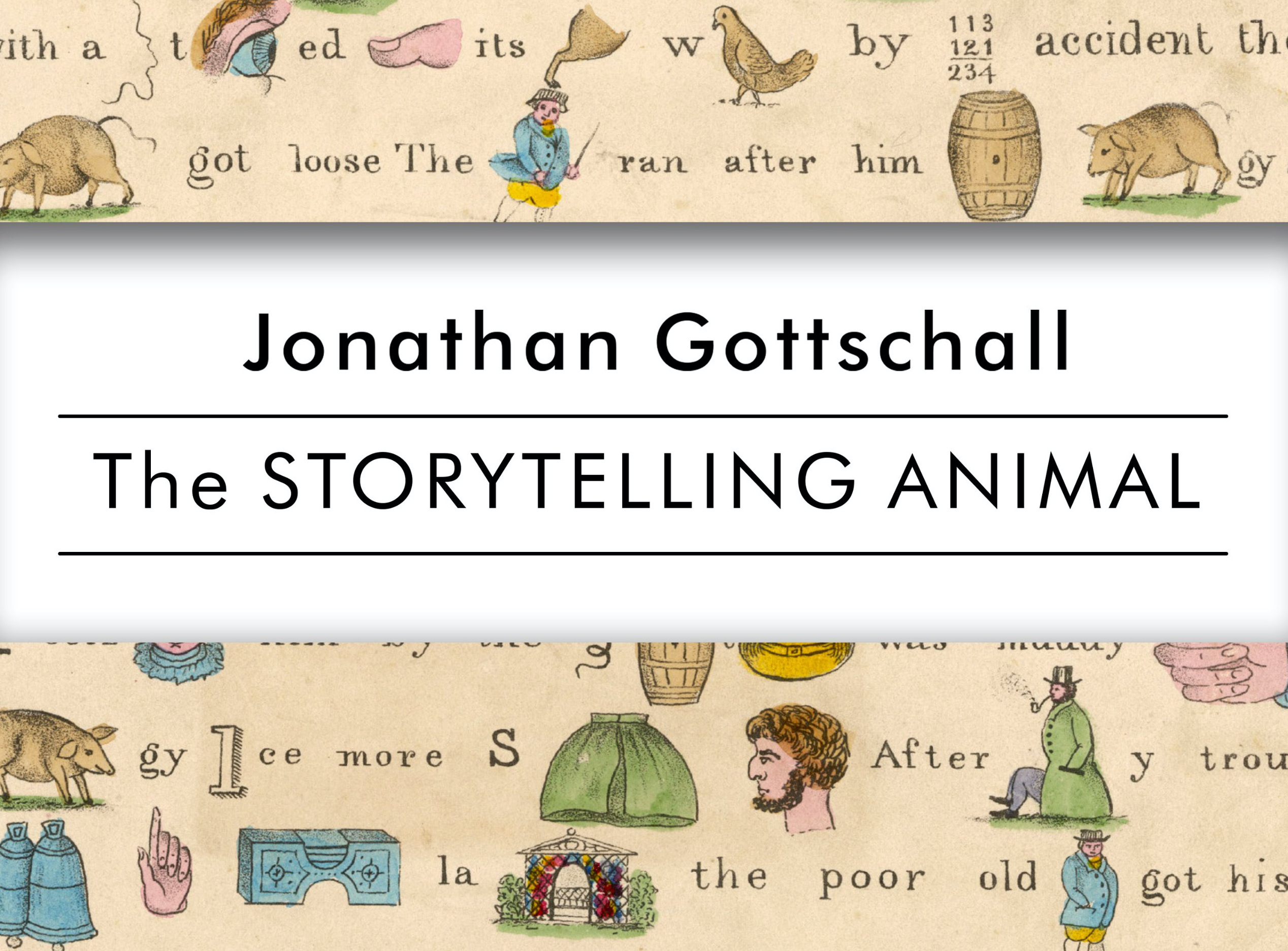1) Reading stories is an act of imagination for the reader
Like Tom Sawyer whitewashing the fence, authors trick readers into doing most of the imaginative work. Reading is often seen as a passive act: we lie back and let writers pipe joy into our brains. But this is wrong. When we experience a story, our minds are churning, working hard.
2) Stories are central to our lives from childhood
Children the world over delight in stories and start shaping their own pretend worlds as toddlers. Story is so central to the lives of young children that it comes close to defining their existence. What do little kids do? Mostly they do story.
3) We are at our most creative at night
We are at our most creative at night. When we sleep, the untired brain dreams richly, wildly, and at great length. Consciousness is altered in dreams but not extinguished. We just have a limited ability to remember the adventures we consciously experience throughout the night. (People vary in their ability to remember dreams, but sleep lab studies show that virtually everyone dreams.) In dreams, our brains—like cheating spouses—live a whole separate existence that they conceal from the waking mind.
4) We spend about half our waking hours daydreaming
Clever scientific studies involving beepers and diaries suggest that an average daydream is about fourteen seconds long and that we have about two thousand of them per day. In other words, we spend about half of our waking hours—one-third of our lives on earth—spinning fantasies. We daydream about the past: things we should have said or done, working through our victories and failures. We daydream about mundane stuff, such as imagining different ways of handling a conflict at work. But we also daydream in a much more intense, storylike way. We screen films with happy endings in our minds, where all our wishes—vain, aggressive, dirty—come true. And we screen little horror films, too, in which our worst fears are realized.
5) Conflict is the fundamental element of fiction
Fiction—from children’s make-believe to folktales to modern drama—is about trouble. Aristotle was the first to note this, and it is now a staple in English literature courses and creative writing manuals. Janet Burroway’s Writing Fiction is adamant on the point: “Conflict is the fundamental element of fiction . . . In life, conflict often carries a negative connotation, yet in fiction, be it comic or tragic, dramatic conflict is fundamental because in literature only trouble is interesting. Only trouble is interesting. This is not so in life.” As Charles Baxter puts it in another book about fiction, “Hell is story-friendly.” The idea that stories are about trouble is so commonplace as to verge on cliché. But the familiarity of this fact has numbed us to how strange it is. Here is what it means. Beneath all of the wild surface variety in all the stories that people tell—no matter where, no matter when—there is a common structure. Think of the structure as a bony skeleton that we rarely notice beneath its padding of flesh and colorful garments. This skeleton is somewhat cartilaginous—there is flex in it. But the flex is limited, and the skeleton dictates that stories can be told only in a limited number of ways. Stories the world over are almost always about people (or personified animals) with problems. The people want something badly—to survive, to win the girl or the boy, to find a lost child. But big obstacles loom between the protagonists and what they want. Just about any story—comic, tragic, romantic—is about a protagonist’s efforts to secure, usually at some cost, what he or she desires.
6) Structure is essential to satisfying stories
Most people think of fiction as a wildly creative art form. But this just shows how much creativity is possible inside a prison. Almost all story makers work within the tight confines of problem structure, whether knowingly or not. They write stories around a pattern of complication, crisis, and resolution.
7) Stories focus on the predicaments of the human condition
Stories universally focus on the great predicaments of the human condition. Stories are about sex and love. They are about the fear of death and the challenges of life. And they are about power: the desire to wield influence and to escape subjugation. Stories are not about going to the bathroom, driving to work, eating lunch, having the flu, or making coffee—unless those activities can be tied back to the great predicaments. Why do stories cluster around a few big themes, and why do they hew so closely to problem structure? Why are stories this way instead of all the other ways they could be? I think that problem structure reveals a major function of storytelling. It suggests that the human mind was shaped for story, so that it could be shaped by story.
8) Fiction is a powerful and ancient virtual reality technology
Fiction is a powerful and ancient virtual reality technology that simulates the big dilemmas of human life. When we pick up a book or turn on the TV—whoosh!—we are teleported into a parallel universe. We identify so closely with the struggles of the protagonists that we don’t just sympathize with them; we strongly empathize with them. We feel their happiness and desire and fear; our brains rev up as though what is happening to them is actually happening to us. The constant firing of our neurons in response to fictional stimuli strengthens and refines the neural pathways that lead to skillful navigation of life’s problems. From this point of view, we are attracted to fiction not because of an evolutionary glitch, but because fiction is, on the whole, good for us. This is because human life, especially social life, is intensely complicated and the stakes are high. Fiction allows our brains to practice reacting to the kinds of challenges that are, and always were, most crucial to our success as a species.
9) The storytelling mind seeks meaningful patterns in the world
The storytelling mind is allergic to uncertainty, randomness, and coincidence. It is addicted to meaning. If the storytelling mind cannot find meaningful patterns in the world, it will try to impose them. In short, the storytelling mind is a factory that churns out true stories when it can, but will manufacture lies when it can’t.
10) Stories serve to burrow ideas into the human mind
Read through the folklore of traditional peoples, and the dominant story type will be myths explaining why things are the way they are. In traditional societies, truths about the spirit world were conveyed not through lists or essays—they were conveyed through story. The world’s priests and shamans knew what psychology would later confirm: if you want a message to burrow into a human mind, work it into a story.
11) Fiction has a positive effect on our sense of empathy
Humans live great chunks of their lives inside fictional stories—in worlds where goodness is generally endorsed and rewarded and badness is condemned and punished. These patterns don’t just reflect a moralistic bias in human psychology, they seem to reinforce it. In his book The Moral Laboratory, the Dutch scholar Jèmeljan Hakemulder reviewed dozens of scientific studies indicating that fiction has positive effects on readers’ moral development and sense of empathy.
12) Storytelling has traditionally been an intensely communal activity
It is easy for us to forget, sitting alone on our couches with our novels and television shows, that until the past few centuries, story was always an intensely communal activity. For tens of thousands of years before the invention of writing, story happened only when a teller came together with listeners. It wasn’t until the invention of the printing press that books became cheap enough to reward mass literacy. For uncounted millennia, story was exclusively oral. A teller or actor attracted an audience, synched them up mentally and emotionally, and exposed them all to the same message.
13) Fiction teaches us as much about the world as nonfiction
Most of us believe that we know how to separate fantasy and reality—that we keep information gathered from fiction safely quarantined from our stores of general knowledge. But studies show that this is not always the case. In the same mental bin, we mix information gleaned from both fiction and nonfiction. In laboratory settings, fiction can mislead people into believing outlandish things: that brushing their teeth is bad for them, that they can “catch” madness during a visit to a mental asylum, or that penicillin has been a disaster for humankind. Think about it: fiction has probably taught you as much about the world as anything else. What would you actually know about, say, police work without television shows such as CSI or NYPD Blue? What would I know about tsarist Russia without Tolstoy and Dostoyevsky? Not much. What would I know about British naval life in the Napoleonic era if not for the habit-forming “Master and Commander” novels of Patrick O’Brian? Even less.
14) Psychotherapy helps unhappy people set their life stories straight
Psychotherapy helps unhappy people set their life stories straight; it literally gives them a story they can live with. And it works. According to a recent review article in American Psychologist, controlled scientific studies show that the talking cure works as well as (and perhaps much better than) newer therapies such as antidepressant drugs or cognitive-behavioral therapy. A psychotherapist can therefore be seen as a kind of script doctor who helps patients revise their life stories so that they can play the role of protagonists again—suffering and flawed protagonists, to be sure, but protagonists who are moving toward the light.
15) Until the day we die, we are living the story of our lives
We think of ourselves as very stable and real. But our memories constrain our self-creation less than we think, and they are constantly being distorted by our hopes and dreams. Until the day we die, we are living the story of our lives. And, like a novel in process, our life stories are always changing and evolving, being edited, rewritten, and embellished by an unreliable narrator. We are, in large part, our personal stories.





